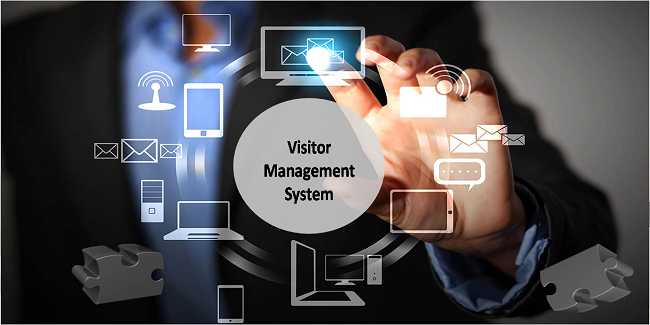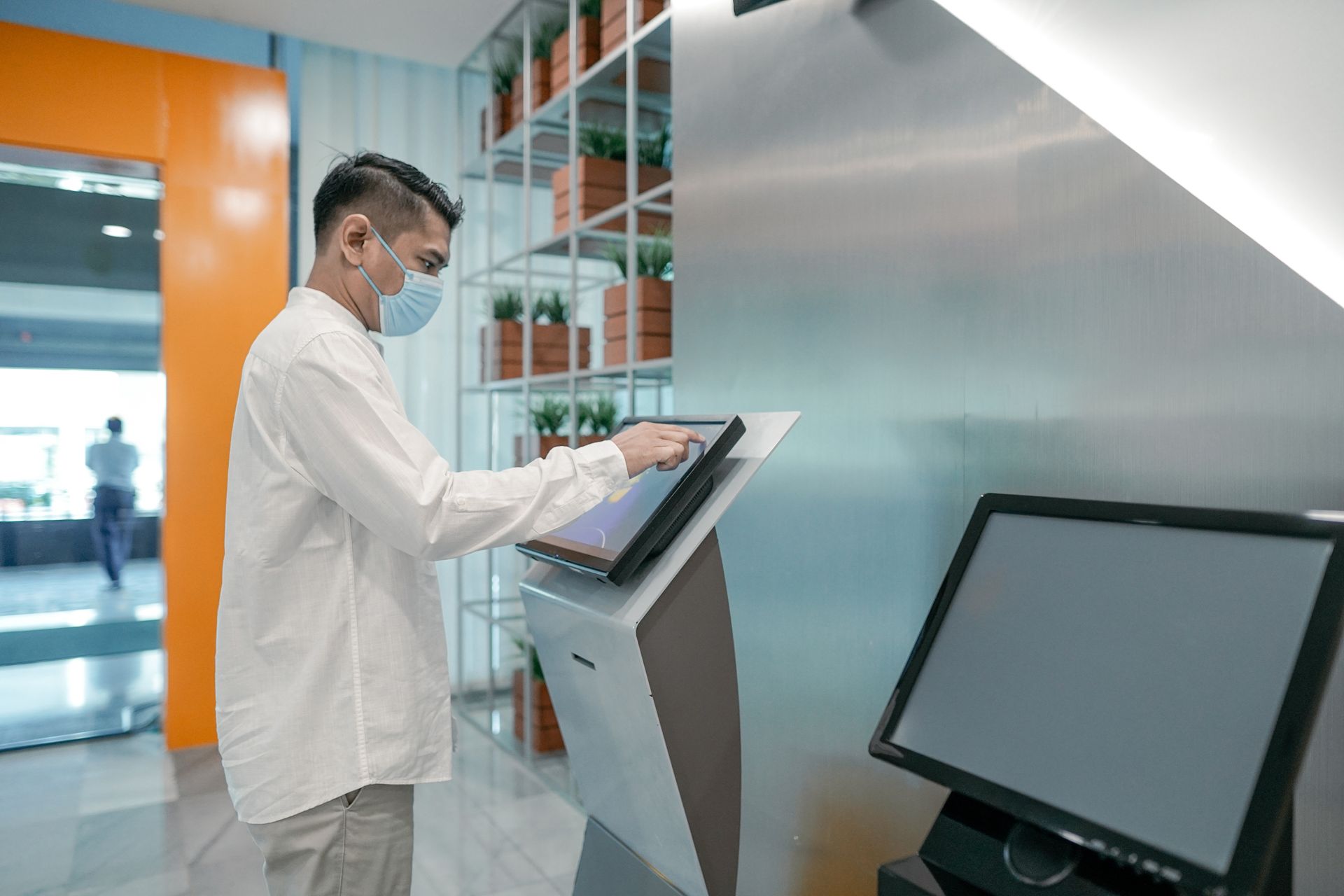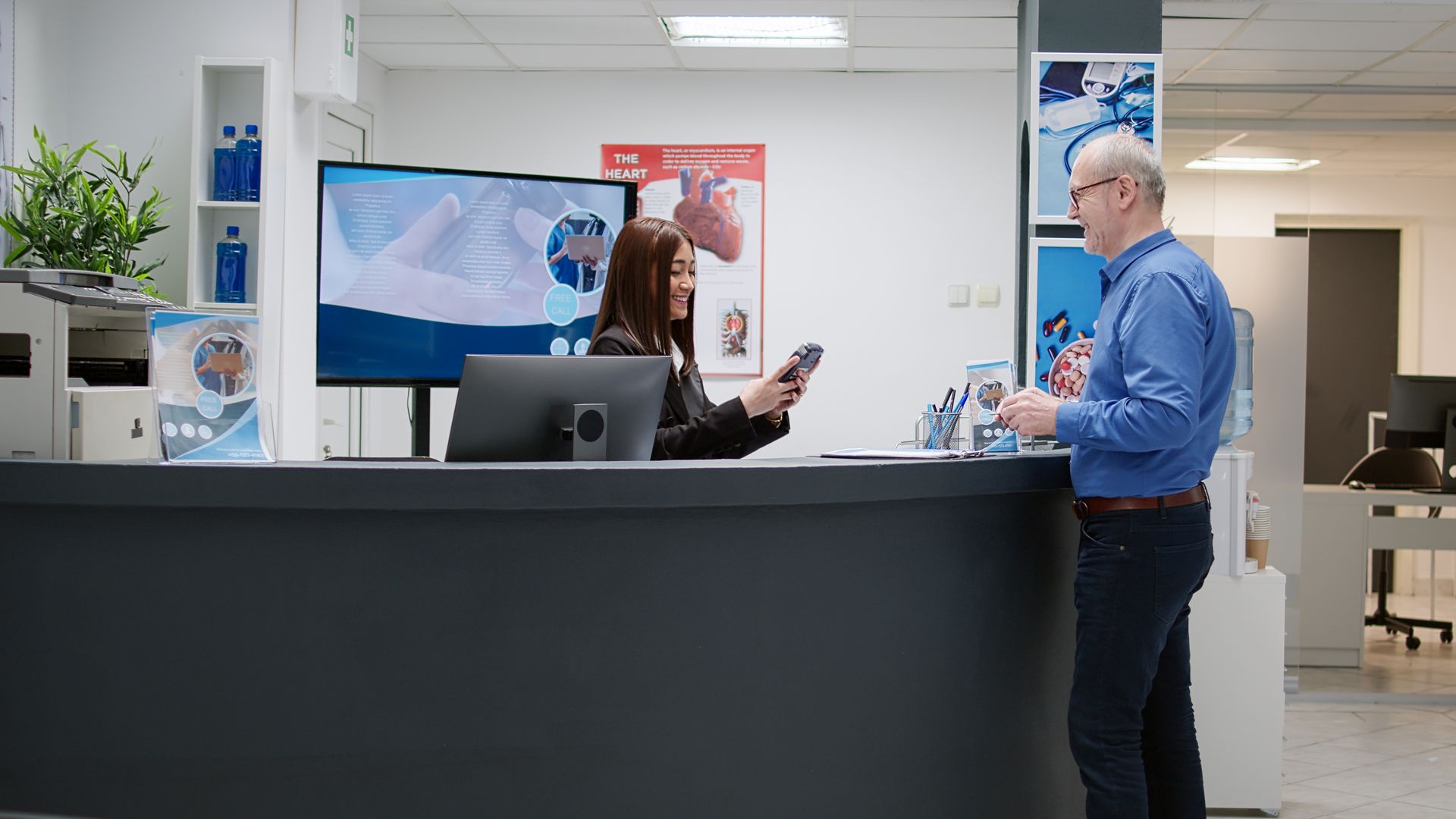Enhancing Security Protocols with Advanced Visitor Management Systems: A Deep Dive into Compliance and Privacy
Enhancing Security Protocols with Advanced Visitor Management Systems: A Deep Dive into Compliance and Privacy

In today’s fast-evolving security landscape, businesses face increasing challenges in safeguarding their premises and sensitive information. Ensuring a secure environment is not only a priority but a necessity for organizations of all sizes. Visitor Management Systems (VMS) have emerged as a crucial component in the modern security framework, offering robust solutions to track, monitor, and manage visitors effectively. Beyond just security, these systems play a pivotal role in ensuring compliance with various regulatory standards, particularly those concerning data privacy and protection.
This blog delves into the significant role of advanced visitor management systems in enhancing security protocols while ensuring adherence to compliance and privacy standards. We will explore how these systems mitigate risks, protect sensitive data, and help businesses navigate the complexities of modern security requirements.
The Role of Visitor Management Systems in Modern Security
Visitor Management Systems have become an integral part of contemporary security strategies. These systems are designed to control, monitor, and document every aspect of a visitor’s journey within a facility. Whether in a corporate office, healthcare facility, or educational institution, VMS ensures that only authorized individuals gain access to specific areas, thereby reducing the risk of unauthorized entry and potential security breaches.
One of the key advantages of a VMS is its ability to provide real-time data on visitor activities. This data can be crucial in identifying unusual patterns or suspicious behavior, enabling security teams to respond swiftly and effectively. Moreover, by automating the check-in process, VMS reduces human error and frees up security personnel to focus on more critical tasks.
Key Features of Advanced Visitor Management Systems
Advanced visitor management systems are equipped with a range of features that not only enhance security but also improve operational efficiency. Some of the most notable features include:
Real-Time Tracking and Monitoring:
One of the standout features of modern VMS is real-time tracking and monitoring. This feature allows security teams to keep a close eye on visitor movements within the premises, ensuring that all activities are in compliance with security protocols. Real-time tracking is particularly valuable in large facilities where the risk of unauthorized access is higher.
Integration with Existing Security Systems:
Advanced VMS can be seamlessly integrated with other security systems, such as CCTV cameras, access control systems, and alarm systems. This integration creates a comprehensive security ecosystem where all components work together to enhance overall protection. For example, if a visitor attempts to access a restricted area, the VMS can automatically trigger an alert and prompt the CCTV cameras to focus on that specific location.
Automation and Customization Options:
Another key feature of advanced VMS is the ability to automate various processes, such as visitor check-ins and badge printing. Automation not only speeds up these processes but also ensures accuracy and consistency. Furthermore, modern VMS offer customization options that allow businesses to tailor the system to their specific needs. This could include setting different access levels for different types of visitors or customizing the visitor registration process to capture the necessary information for compliance purposes.
Ensuring Compliance with Security Standards
Compliance with security standards is a critical concern for any organization, particularly those in regulated industries such as healthcare, finance, and education. Visitor Management Systems play a crucial role in helping organizations meet these standards by providing detailed records of all visitor interactions. This data can be essential during audits and inspections, demonstrating that the organization has taken all necessary steps to ensure security.
VMS can also be configured to require visitors to complete specific tasks before entering the premises, such as signing non-disclosure agreements or undergoing background checks. This ensures that the organization remains compliant with industry regulations while also protecting sensitive information.
Privacy Considerations in Visitor Management Systems
With the increasing emphasis on data privacy, organizations must ensure that their VMS complies with relevant privacy regulations, such as the General Data Protection Regulation (GDPR). Visitor Management Systems must be designed to protect personal information, such as names, contact details, and identification numbers, from unauthorized access and misuse.
VMS vendors are increasingly incorporating privacy-by-design principles into their systems, ensuring that data is encrypted, access is restricted, and retention policies are clearly defined. Additionally, visitors should be informed about how their data will be used and given the option to consent or opt out where applicable.
Risk Mitigation through Visitor Management Systems
Risk management is a key component of any security strategy, and Visitor Management Systems can significantly reduce the risks associated with managing visitors. By keeping detailed records of who enters and leaves the premises, VMS can help identify potential security threats before they escalate. This is particularly important in industries where the presence of unauthorized individuals could pose significant risks, such as in healthcare or government facilities.
Furthermore, VMS can be integrated with other risk management tools, such as access control systems and incident reporting platforms, to create a holistic approach to security. This integration ensures that all security-related information is centralized, making it easier to identify and respond to potential threats.
Enhancing Data Security in Visitor Management Systems
Data security is a major concern in today’s digital age, especially when dealing with sensitive visitor information. Advanced Visitor Management Systems employ several strategies to enhance data security, including:
Encryption:
Visitor data is encrypted both in transit and at rest, ensuring that it cannot be intercepted or accessed by unauthorized parties.
Secure Data Storage:
Visitor data is stored in secure, compliant databases that are regularly audited to ensure they meet the highest security standards.
Regular Audits and Updates:
VMS vendors regularly update their systems to address emerging security threats and ensure compliance with the latest regulations.
Integration of VMS with Other Security Protocols
The integration of Visitor Management Systems with other security protocols is essential for creating a cohesive security strategy. By integrating VMS with CCTV, access control, and alarm systems, organizations can ensure that all aspects of their security are working together to protect the premises.
For example, a VMS can be configured to automatically trigger an alarm if a visitor attempts to enter a restricted area, while simultaneously alerting security personnel and activating CCTV cameras. This level of integration enhances the organization’s ability to respond to security incidents in real-time.
Visitor Management Systems and Emergency Preparedness
In the event of an emergency, such as a fire or security breach, having an accurate record of who is on the premises is crucial. Visitor Management Systems play a vital role in emergency preparedness by providing real-time data on the location and status of all visitors.
During an emergency, VMS can be used to quickly and efficiently evacuate the premises, ensuring that all visitors are accounted for. Additionally, VMS can provide security teams with important information, such as who is still inside the building and their last known location, which can be critical during rescue operations.
Compliance with Industry-Specific Regulations
Different industries have different compliance requirements, and Visitor Management Systems must be adaptable to meet these needs. For example, in the healthcare industry, VMS must comply with the Health Insurance Portability and Accountability Act (HIPAA), which sets strict standards for the protection of patient information.
In educational institutions, VMS must ensure compliance with the Family Educational Rights and Privacy Act (FERPA), which protects the privacy of student records. By customizing VMS to meet industry-specific regulations, organizations can ensure they remain compliant while also enhancing security.
The Future of Visitor Management Systems in Security
As technology continues to evolve, so too will Visitor Management Systems. Emerging trends, such as the use of artificial intelligence and machine learning, are set to transform the way organizations manage visitors. These technologies can be used to analyze visitor data in real-time, identifying potential security threats before they occur.
Additionally, the integration of VMS with mobile devices and cloud-based platforms will make it easier for organizations to manage visitors remotely, further enhancing security. As VMS continues to evolve, it will play an increasingly important role in organizational security strategies.
Best Practices for Implementing a Visitor Management System
Implementing a Visitor Management System can be a complex process, but following best practices can help ensure a successful deployment. Some key steps include:
Conducting a Security Assessment:
Before implementing a VMS, organizations should conduct a thorough security assessment to identify potential vulnerabilities and determine the best way to address them.
Choosing the Right System:
Not all Visitor Management Systems are created equal, so it’s important to choose one that meets the specific needs of the organization. Factors to consider include ease of use, integration capabilities, and compliance with industry regulations.
Training Staff:
Proper training is essential to ensure that staff can effectively use the VMS. This includes training on how to operate the system, as well as understanding the importance of following security protocols.
Measuring the Effectiveness of Visitor Management Systems
Once a Visitor Management System has been implemented, it’s important to regularly measure its effectiveness. Key metrics to track include:
Visitor Check-In Times:
Monitoring how long it takes for visitors to check in can help identify bottlenecks in the process and improve efficiency.
Security Incidents:
Tracking the number of security incidents that occur after implementing a VMS can help determine its effectiveness in enhancing security.
Compliance with Regulations:
Regularly reviewing compliance with industry regulations can help ensure that the VMS is meeting its intended purpose.
Choosing the Right Visitor Management System for Your Business
Choosing the right Visitor Management System is a critical decision that can have a significant impact on an organization’s security and compliance. When selecting a VMS, it’s important to consider factors such as ease of integration, scalability, and cost. Additionally, organizations should look for systems that offer robust data security features and comply with relevant privacy regulations.
By following a comprehensive checklist and conducting thorough research, organizations can choose a VMS that meets their specific needs and enhances their overall security posture.
Conclusion
Visitor Management Systems have become an essential tool for organizations looking to enhance their security protocols and ensure compliance with privacy regulations. By providing real-time tracking, automating processes, and integrating with other security systems, VMS offers a comprehensive solution to managing visitors and protecting sensitive information.
As technology continues to evolve, so too will the capabilities of Visitor Management Systems. By staying informed about emerging trends and best practices, organizations can ensure that their VMS remains effective in meeting their security needs.








